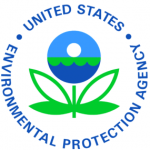After almost three decades of study, pressure from health groups and pushback from polluters, the Environmental Protection Agency (EPA) has released its assessment of dioxin as a health risk.
 Dioxin is a highly toxic chemical created by industrial pollution, waste incineration and forest fires. It gained notoriety as the defoliant known as Agent Orange during the Vietnam war and in Love Canal, the Niagara Falls neighborhood where 21,000 tons of the secretly buried chemical caused a health threat so severe that a federal emergency was declared in 1978.
Dioxin is a highly toxic chemical created by industrial pollution, waste incineration and forest fires. It gained notoriety as the defoliant known as Agent Orange during the Vietnam war and in Love Canal, the Niagara Falls neighborhood where 21,000 tons of the secretly buried chemical caused a health threat so severe that a federal emergency was declared in 1978.
Dioxin and other similar chemicals known as collectively as dioxins, can cause a range of health problems including reproductive problems, miscarriage, developmental problems, immune system damage, hormone disruption, skin rashes and discoloration, liver damage and cancer. When dioxins are released into the atmosphere, they infiltrate the food chain and accumulate in animal fat.
The EPA has set the threshold for safe exposure level to dioxin at a toxicity equivalence (TEQ) of 0.7 picograms per kilogram of body weight per day which should not be a problem for most Americans, according to the agency. The threshold will also be used to determine the degree of environmental cleanup necessary if industrial pollution releases dioxins into the soil, air and water.




